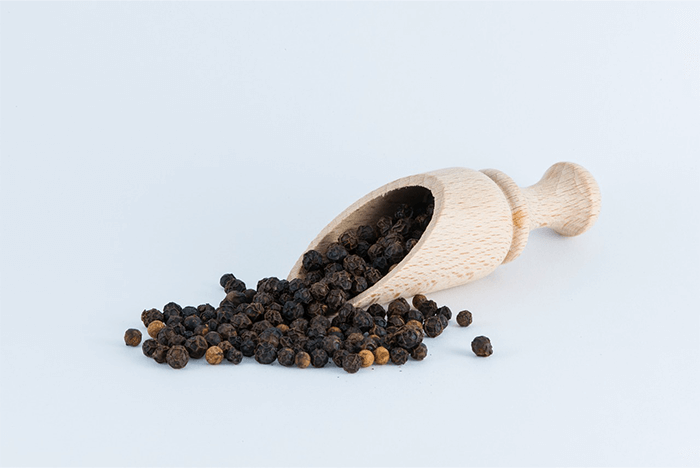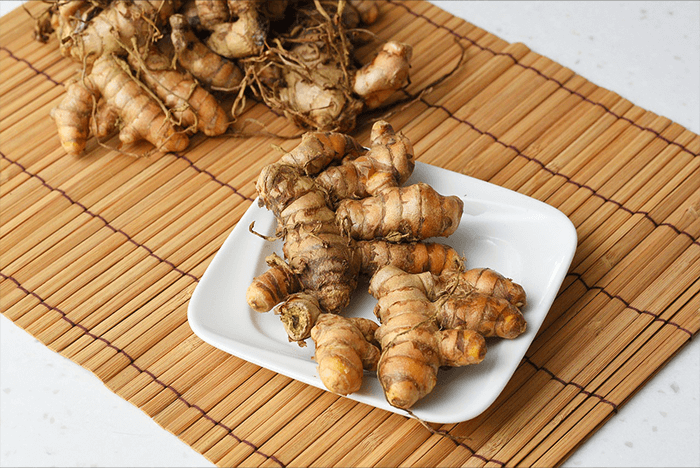Description:
Pepper refers to several different plants that produce spicy or flavorful fruits, the most common being the black pepper (Piper nigrum) and chili peppers from the Capsicum genus.
- Black Pepper (Piper nigrum): Black pepper is a flowering vine in the family Piperaceae, cultivated for its fruit, known as a peppercorn. The dried fruit is used as a spice and seasoning. The fruit is a drupe about 5 mm in diameter, dark red when fully mature, containing a single seed. Peppercorns can be processed in different ways to yield black, white, green, or red peppercorns.
- Chili Pepper (Capsicum): Chili peppers are the fruits of plants from the genus Capsicum and are members of the nightshade family (Solanaceae). They are widely used in various cuisines to add heat to dishes. Chili peppers can be found in a range of shapes, sizes, and levels of spiciness, determined by the presence of capsaicin, the compound responsible for their heat.
Common Features:
- Black Pepper: The plant is a perennial vine that climbs on supports or trees. It produces small, white flowers, and the fruit, known as a peppercorn, changes color as it matures.
- Chili Pepper: Chili plants are usually herbaceous or small shrubs, with fruits varying in color from green, red, yellow, or purple. The shape and size of the chili pepper depend on the variety, ranging from small and round to long and slender.
Role in the Ecosystem:
- Pollination: Both black pepper and chili pepper plants have flowers that attract pollinators, including bees and butterflies. Pollination is vital for the production of their fruits.
- Seed Dispersal: Birds are important dispersers of chili seeds as they are immune to capsaicin and feed on the fruits. In turn, they spread the seeds, promoting plant growth in new areas.
- Herbivore Deterrent: Capsaicin in chili peppers serves as a natural defense mechanism against herbivores. It also helps protect the plant from fungal infections.
- Soil Health: As perennial plants, especially black pepper, they contribute to soil health by preventing erosion and promoting biodiversity in the regions where they grow.
Importance:
- Culinary Use:
- Black Pepper: One of the world’s most popular spices, black pepper is used in seasoning a variety of dishes. It adds warmth and depth to both savory and sweet foods.
- Chili Peppers: Chili peppers are integral to many cuisines, providing heat and flavor. They are used fresh, dried, or in powdered form to enhance the taste of sauces, stews, meats, and even drinks.
- Medicinal Uses:
- Black Pepper: Black pepper has been traditionally used for its potential health benefits, including its antioxidant, antimicrobial, and anti-inflammatory properties. Piperine, an active compound in black pepper, is known to enhance the absorption of certain nutrients and medications.
- Chili Peppers: Capsaicin, the compound in chili peppers responsible for their heat, has numerous medicinal uses. It is often used in topical ointments for pain relief, particularly for arthritis and muscle pain. Chili peppers are also believed to boost metabolism and support cardiovascular health.
- Economic Importance: Both black and chili peppers are economically significant. Black pepper has been a valuable trade commodity for centuries, often referred to as “black gold.” Chili peppers are equally vital in global trade, contributing significantly to the economies of the countries that grow and export them, such as India, Vietnam, and Mexico.
- Cultural Significance: Pepper, especially black pepper, was highly valued in ancient times and was often used as currency. Chili peppers, having originated in the Americas, became integral to local cuisines and traditions, spreading to Europe, Africa, and Asia after the Columbian exchange.
Interesting Facts:
- Black Pepper’s Influence on History: Black pepper was so valuable in ancient times that it was used as a form of currency and even as a ransom in historical events, such as when Rome was sacked in 410 AD.
- Scoville Scale: Chili peppers are measured in heat units on the Scoville Scale, which was created to gauge the spiciness of different peppers based on their capsaicin content. The Carolina Reaper currently holds the record for the hottest chili pepper.
- Capsaicin and Pain Relief: Capsaicin, found in chili peppers, is widely used in creams and patches for pain relief, particularly for conditions like arthritis, nerve pain, and muscle aches.
- Peppercorn Varieties: Depending on how they are processed, the same black pepper plant can produce black, white, green, or red peppercorns. The variation in color and flavor is due to different stages of ripeness and processing techniques.
Sources:
- Britannica: Black Pepper Plant Overview
- Scoville Scale Information from the Chili Pepper Madness
- Healthline: Medicinal Uses of Capsaicin and Piperine



